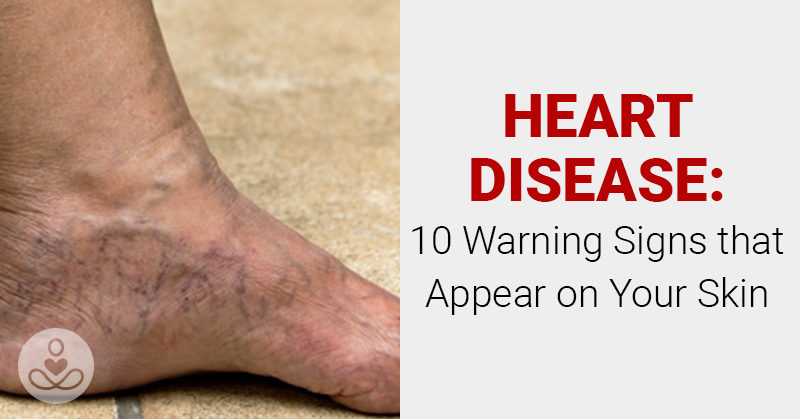It’s not just your cardiologist who can give you valuable, life-saving information about your risk of heart disease– dermatologists can too! The American Academy of Dermatology points out that many people first discover heart disease because their dermatologist noticed a warning sign of a heart problem somewhere on their skin.
Read: 8 Vitamin Deficiencies That Show Up On Your Skin
10 Skin Conditions That Could Be Signs of Heart Disease
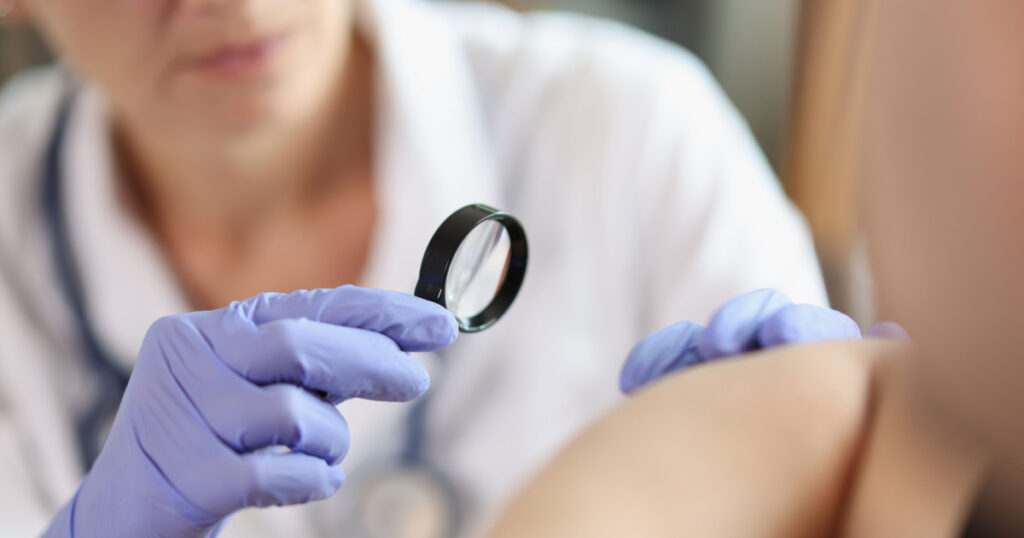
The American Academy of Dermatology has created a list of the 10 most common skin-related symptoms that can be red flags of an issue with your cardiovascular health.
Swollen Feet or Legs
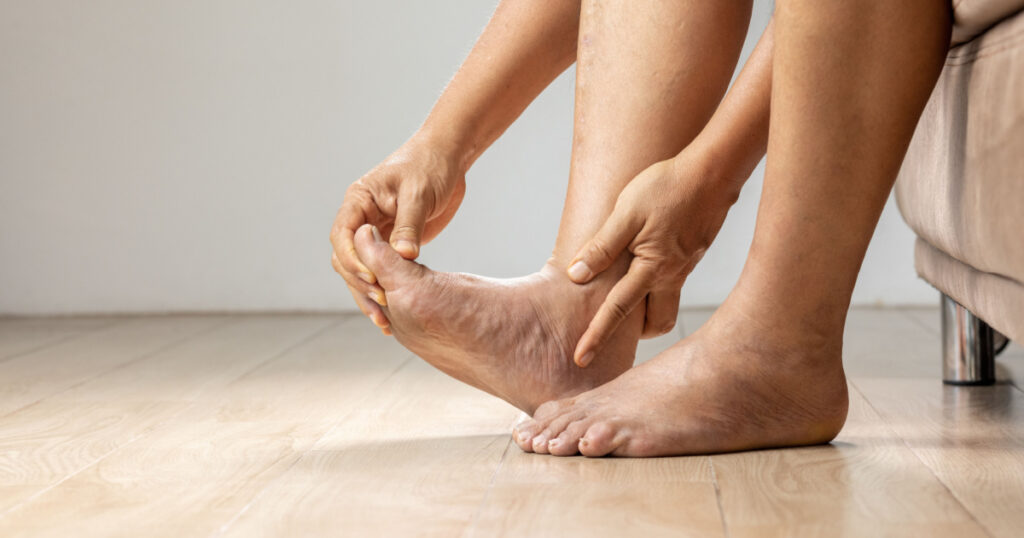
Various types of heart conditions can cause fluid to build up in your feet and lower legs. If you notice unexplained puffiness (or edema) in your feet, you should bring it to the attention of your doctor so he or she can check for other signs of a heart condition.
Blue-ish Skin Discoloration
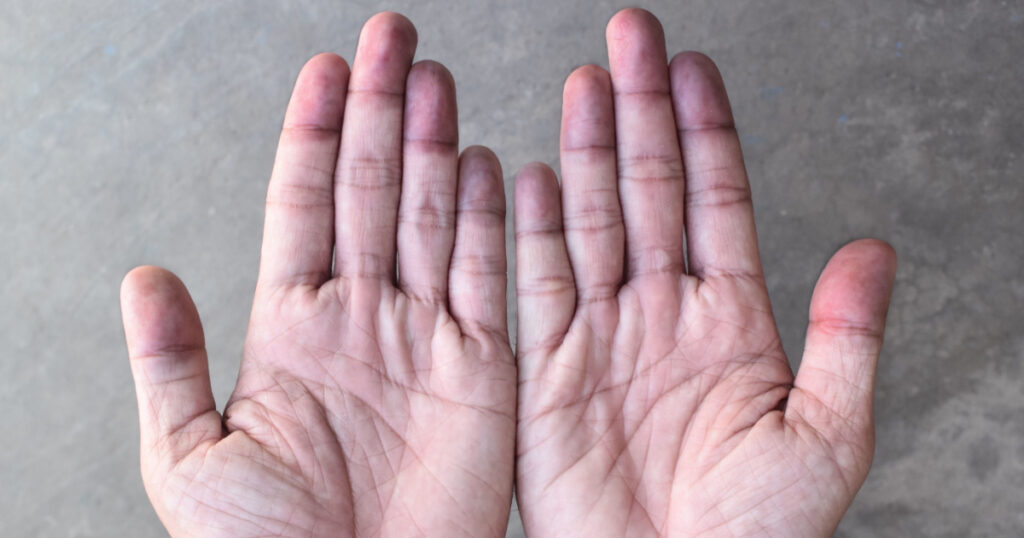
Cyanosis (ie. blue discoloration) is not necessarily a matter of concern when you’re exposed to cold elements over a short period of time. However, if you notice that at a comfortable temperature, you have a blue-ish area on your skin, it could be a sign of a blocked blood vessel. The area turns blue due to a lack of oxygen (which is delivered via your blood). If you notice an area on your skin that appears discolored, consult your doctor immediately.
Mottled Skin
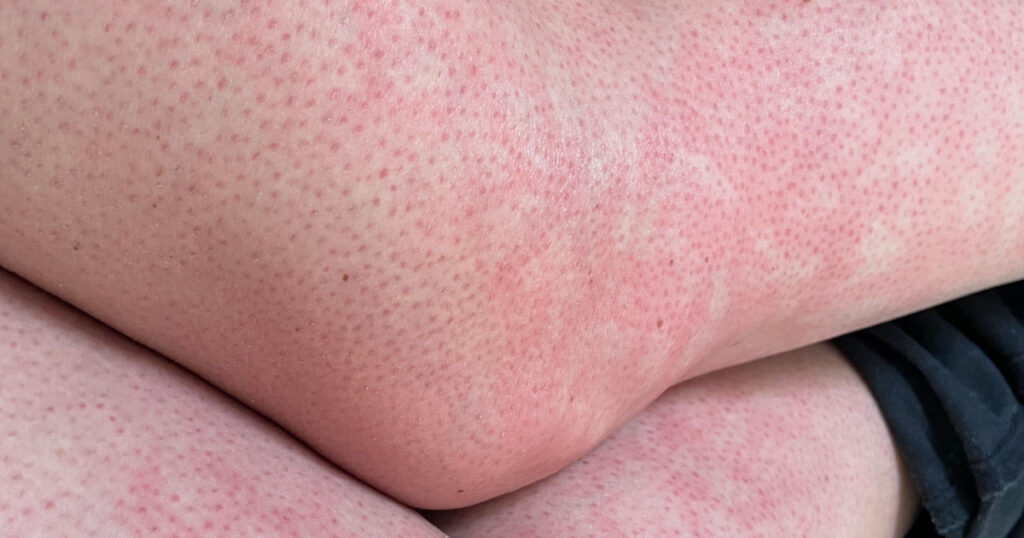
Livedo reticularis is the medical term for skin that has a blueish or purplish lace or net-like pattern in a certain area. Similar to cyanosis, it’s common in cold weather, however, should be taken seriously otherwise. Livedo reticularis can be a sign of blocked small arteries or cholesterol embolization syndrome. If you notice this pattern doesn’t go away, ask your doctor to look into the health of your arteries.
Read: Parasitic Worms Found in Woman’s Skin and Brain After Eating Soup Made With Raw Blood
Cholesterol Deposits
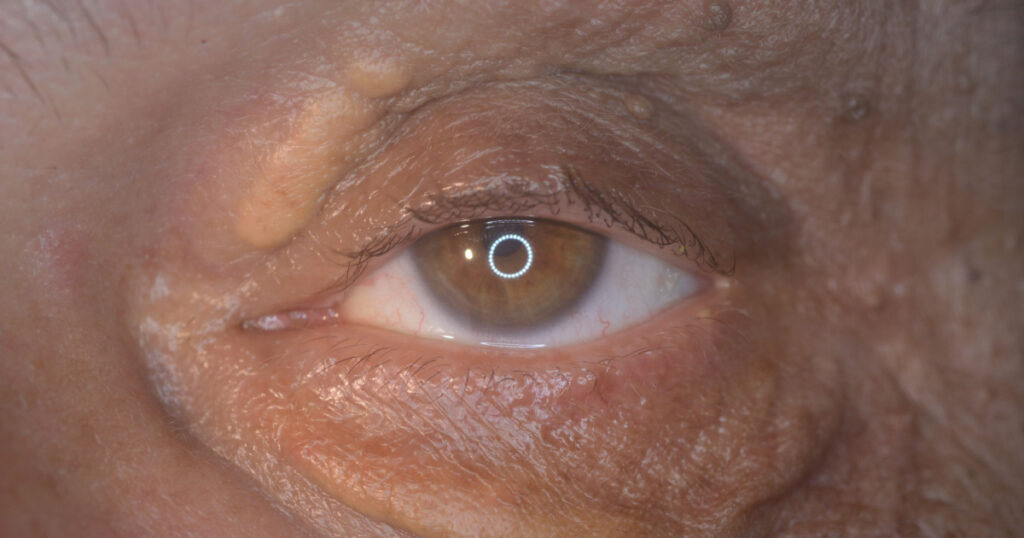
Cholesterol deposits usually form in the corner of your eyes, the palms of your hands, or the backs of your legs. As the name may suggest, you may have unhealthy cholesterol levels. Visit your doctor to check your cholesterol levels.
Waxy “Rash”

The sudden appearance of a cluster of waxy bumps (eruptive xanthoma) might look like some kind of allergic reaction, however, it’s really a type of cholesterol deposit. This condition is usually a sign of either diabetes or dangerously high cholesterol levels. Should this symptom appear, seek medical attention immediately.
Clubbed Nails
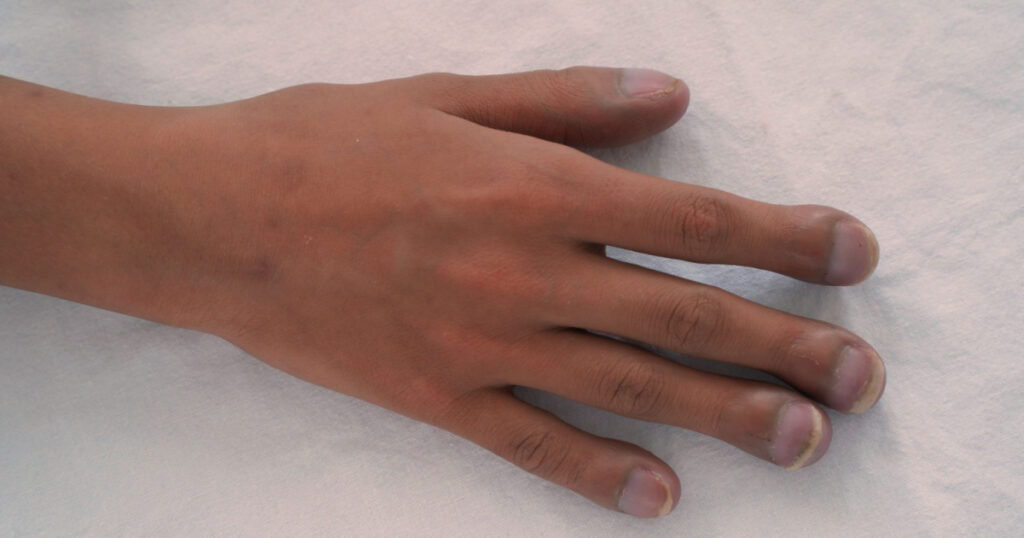
Swollen nail beds and sloped nails are sometimes just a natural feature for some people and not a medical concern. However, it could also be a symptom of a heart infection or heart disease.
Splinter-Like Lines Underneath Your Nails
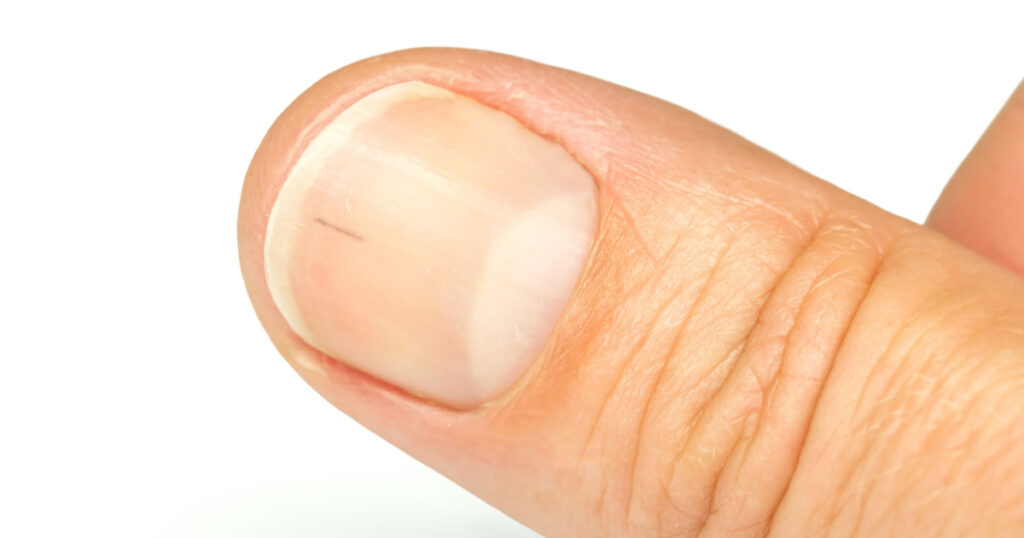
If you have what looks like splinters stuck underneath your nails (or short dark lines), odds are, it’s from physical nail damage. However, if you know for certain that you haven’t damaged your nail in any way, this could be a symptom of heart disease. If you notice “splinter hemorrhages” along with a fever and/or irregular heartbeat, you should speak with your doctor about assessing your heart health.
Small Bumps or Nodules
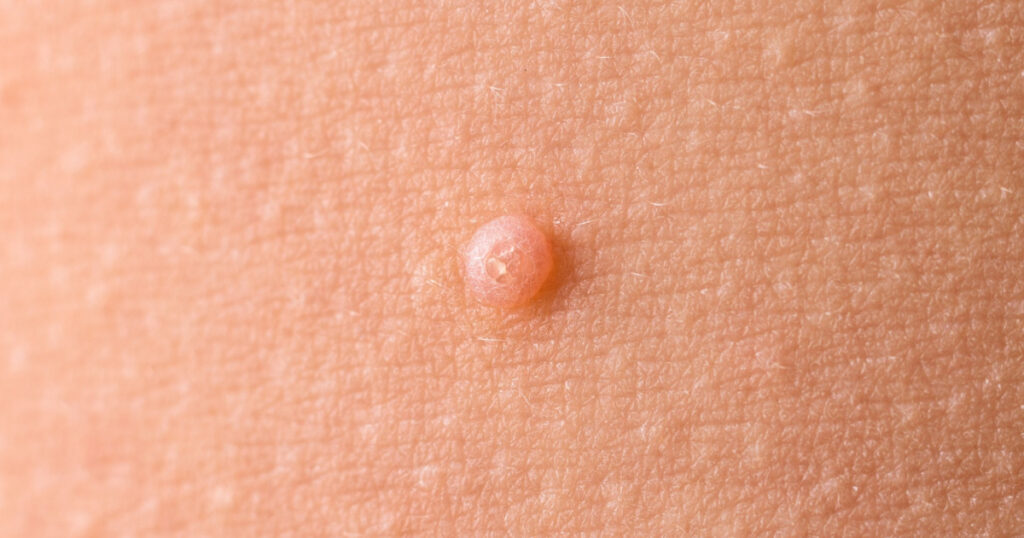
Protein deposits can affect any area of your skin and may be a sign of protein build-up in your heart or other major organs. If you notice new bumps anywhere on your skin, consult a dermatologist or doctor.
Painful Lumps On Fingers or Toes
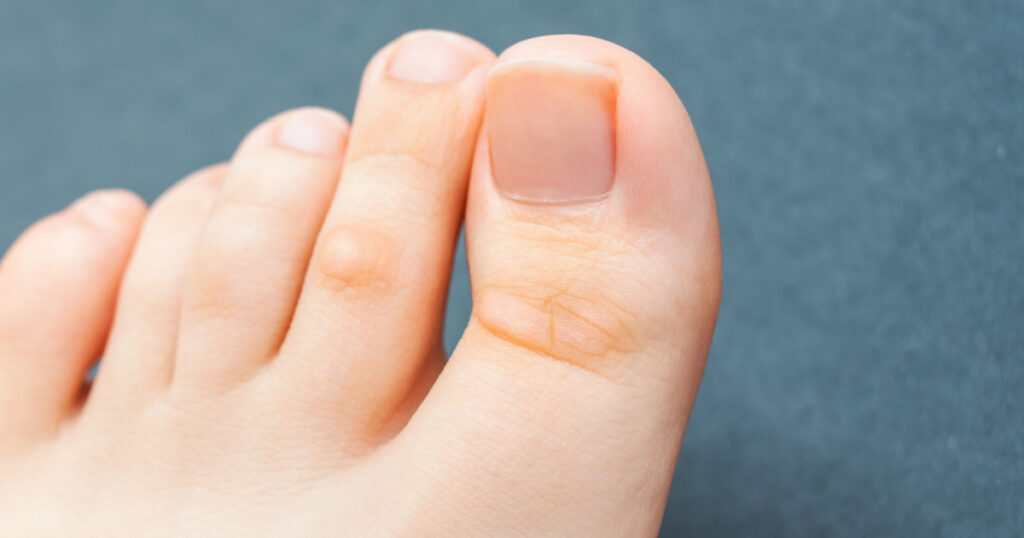
Osler nodes are tender or painful lumps that can affect your fingers and toes. The condition usually lasts a short period of time (between several hours and a few days), but it could be a sign of infective endocarditis or a heart infection. If you notice the appearance of Osler nodes on your fingers, toes, or both, you should ask your doctor to test for infective endocarditis.
Red Skin Discoloration on Hands or Feet
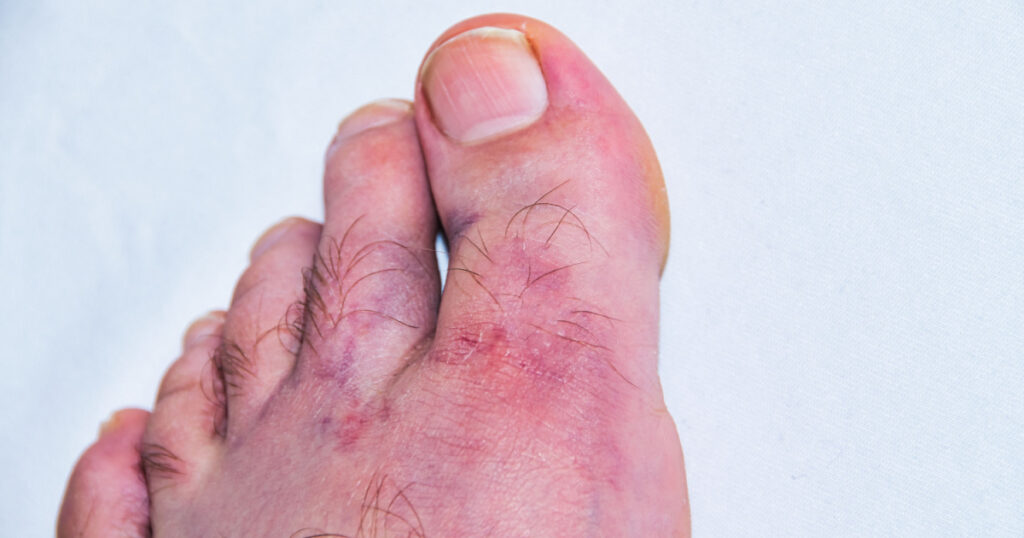
What may look like a dark red bruise under the skin may actually be a Janeway lesion. These patches of discoloration or painless and usually don’t last more than a few weeks. They could be a symptom of a heart infection (infective endocarditis). If you have unexplained red painless bruises on your hands or feet, ask your doctor to test for infective endocarditis.
Keep Reading: Eruptive Xanthomatosis Is A Skin Condition No One Should Ignore
Sources
- https://www.aad.org/public/diseases/other-conditions/heart-disease-warning-signs
- Hirschmann JV and Raugi GJ. “Blue (or purple) toe syndrome.” J Am Acad Dermatol. 2009; 60(1):1-20.
- Khanna N, Roy A, et al. “Janeway lesions: an old sign revisited.” Circulation. 2013; 127(7):861.
- Misin A, Di Bella S, et al. “Image of the month: ‘Diagnostic hands’: Janeway lesions.” Clin Med (Lond). 2017; 17(4):373-374.
- Uliasz A and Lebwohl M. “Cutaneous manifestations of cardiovascular diseases.” Clin Dermatol. 2008; 26(3):243-54.
